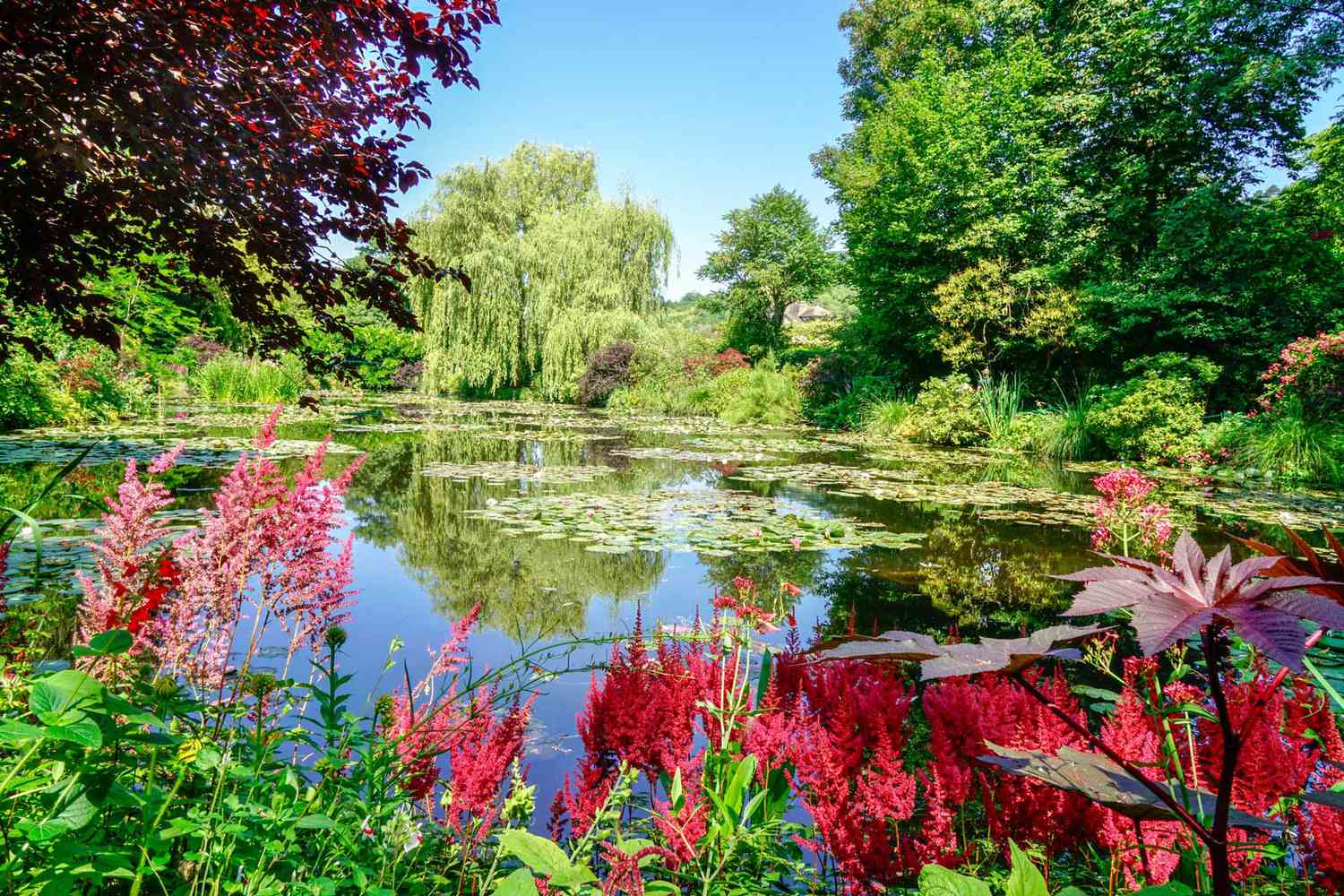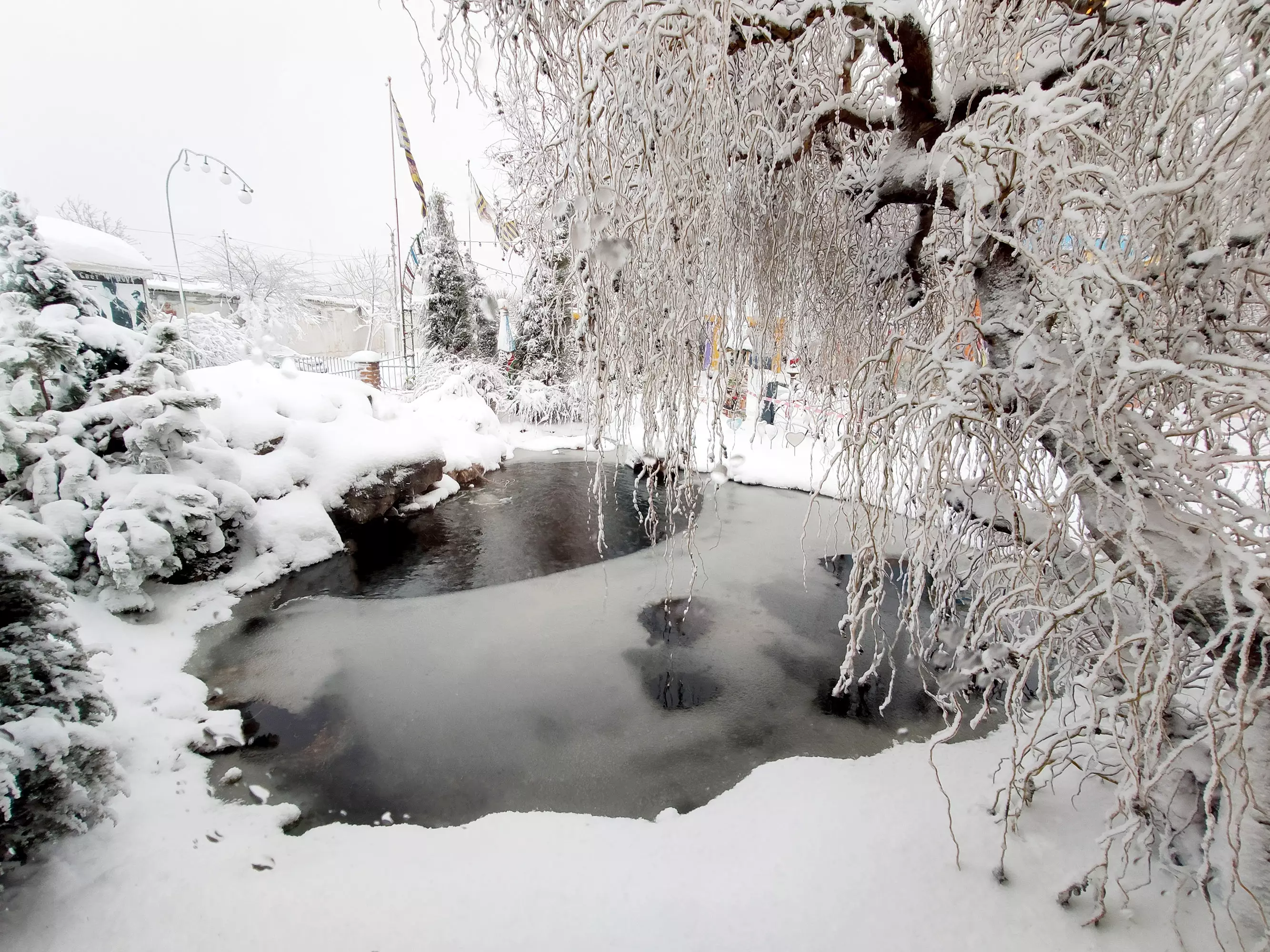
When it comes to pond maintenance, staying on top of tasks year-round is crucial for keeping your pond healthy and beautiful. Each season brings its own set of challenges and requirements, so knowing what to do when can make a big difference. In this blog post, we'll guide you through the seasonal maintenance tasks needed to care for your UK pond throughout the year.
Spring Awakening: Kickstarting Your Pond after Winter
With spring's arrival, your pond emerges from its winter slumber, beckoning for a fresh start. This season is pivotal for setting the tone for your pond's health and vitality throughout the warmer months. Begin this rejuvenating process by dedicating some time to clear away the remnants of winter. Fallen leaves, twigs, and deceased plant material can accumulate in your pond during the colder months, creating an unwelcomed layer of detritus. Removing this debris is not only aesthetically pleasing but also prevents the decay process from deteriorating your pond's water quality.
As life in and around your pond starts to stir, it's the perfect moment to give your mechanical helpers – the pump and filter – a thorough inspection and cleaning. After months of dormancy or reduced activity, these essential components require a bit of TLC to ensure they operate smoothly, supporting the pond's ecosystem as it comes back to life. This task is crucial; a clean and efficient filtration system is the heart of a healthy pond, circulating water and facilitating the removal of impurities.
Introducing beneficial bacteria into your pond at this juncture is akin to laying the foundation for a robust, self-sustaining environment. These microscopic allies play a critical role in the pond's ecological balance, breaking down organic matter, reducing algae growth, and improving overall water quality. Their work is subtle yet immensely impactful, setting the stage for a vibrant pond life.
Lastly, it's wise to conduct a thorough check for any signs of wear and tear. The winter weather can be harsh, and your pond is not immune to its effects. Look for any indications of damage or leaks, no matter how minor they may seem. Addressing these issues promptly can save you from more significant headaches down the line.
Spring is a time of renewal and energy, and by embracing these initial maintenance tasks, you're not just cleaning up; you're invigorating your pond with a burst of vitality that will carry through the rest of the year. It's a rewarding endeavour, laying the groundwork for a season of growth, beauty, and enjoyment.
Summer Loving: Maintaining a Healthy Pond in Warm Weather

Summer in the UK ushers in a period of flourishing life and vibrancy around your pond, with plants in full bloom and aquatic creatures active. However, it’s also a season that demands a bit more vigilance to keep everything in harmony. The key to a thriving summer pond lies in monitoring and adjusting to the changing needs of its inhabitants and environment.
With temperatures on the rise, your pond's water can quickly become a hotbed for algae if not managed correctly. Regularly checking and maintaining the balance of nutrients within the pond is crucial. Overfeeding fish can contribute to nutrient overload, so be mindful of the amount of food you're giving them, ensuring it's appropriate for their dietary needs and numbers.
Algae isn't just unsightly; it can severely deplete oxygen levels in the water, putting aquatic life at risk. Engaging in a gentle but consistent removal of algae and dead plant material will keep your pond’s ecosystem balanced. Consider introducing more aquatic plants that compete with algae for nutrients and provide shade, which helps keep the water temperature down.
Speaking of temperature, it's wise to keep a close eye on how warm your pond is getting. Installing a pond thermometer can help you monitor this closely. If the water becomes too warm, oxygen levels can drop to dangerous levels. Implementing aeration techniques, such as adding a fountain or aerator, can significantly improve oxygen circulation, ensuring your pond inhabitants remain healthy and active.
Another summer maintenance tip is to maintain the cleanliness of your pond’s filtration system. With the pond in full swing, filters can clog more quickly, reducing their efficiency. Regular checks and cleaning of the pump and filter will ensure they continue to function at their best, keeping the water clear and healthy.
Water evaporation is more pronounced during these warmer months, so keeping an eye on the water level and topping up the pond with treated water when necessary is important to avoid significant drops that could affect the pond's overall health.
By embracing these summer maintenance practices, you're not just responding to the challenges posed by the warmer weather; you're actively enhancing the resilience and beauty of your pond. This proactive approach ensures that your pond remains a bustling hub of activity and tranquillity, a place of joy and serenity through the longest days of the year.
Autumn Adjustments: Preparing Your Pond for Cooler Times

As autumn paints the landscape with its rich palette of colours, it’s a signal for pond keepers across the UK to gear up for some essential maintenance tasks. This time of year is about preparation and adjustment, ensuring your pond is poised to weather the cooler months with grace.
Begin by giving attention to the plant life around your pond. Aquatic plants that have served as summer sanctuaries for wildlife and aesthetic delights for you will start to die back. Trimming these plants back can prevent excess organic material from decaying in the water, which in turn helps to maintain water quality. This doesn’t mean stripping your pond of all its greenery, though. Leaving some plant matter can provide crucial shelter for pond life as the temperature drops.
Introducing a pond net is a savvy move during this season. As deciduous trees shed their leaves, a net will catch the bulk of this foliage, sparing you the chore of constant cleaning and safeguarding your pond from becoming a leafy soup. This preventive measure can make a significant difference in maintaining a healthy pond ecosystem.
Feeding routines for your fish need to adapt to the changing season too. As the water cools, the metabolic rate of fish slows, reducing their need for food. Gradually decrease the amount you're feeding them, shifting to a specially formulated winter feed that's easier for them to digest. This adjustment will help ensure they're not overfed, which is crucial as undigested food can pollute the pond water.
Finally, looking ahead to the colder months, the installation of a pond heater or a de-icer could be a wise investment. Not only will this help prevent the pond from freezing over entirely, but it will also facilitate gas exchange, essential for the health of any fish braving the winter in your pond.
Autumn is a time of change and preparation. By undertaking these adjustments, you’re not just reacting to the season's demands; you're proactively setting the stage for a pond that remains a point of natural beauty and interest, even as the winter whispers in.
Winter Watch: Keeping Your Pond Safe and Sound in the Cold

Winter may seem a quieter time for your pond, but it's a season that still demands a watchful eye to ensure its health and safety. As the temperature drops, taking proactive steps to look after your pond can prevent potential issues, keeping it a peaceful retreat even in the coldest months.
Firstly, managing ice formation is critical during this period. Gently breaking any ice that forms on the surface ensures harmful gases released by decaying plants and other organic matter can escape. This is vital for maintaining a healthy environment for any fish or wildlife braving the winter in your pond. An air stone or small pond heater can be invaluable tools for keeping a small area of the pond ice-free, facilitating this essential gas exchange.
For those with fish, consider their needs carefully as the water temperature falls. Fish enter a state of semi-hibernation and require much less food, if any, during this time. Overfeeding can lead to water quality issues, as uneaten food decomposes, so it's advisable to pause feeding as winter sets in fully. Moreover, ensure your fish have access to deeper parts of the pond where the water remains a little warmer, offering them a safe haven.
Periodic checks on your pond’s pump and filtration system are also necessary. These systems can become less efficient in cold weather and may even freeze if not properly cared for. Ensuring they are clean and in good working order before the deep cold sets in will save a lot of trouble. Additionally, a quick survey of your pond for any damage or leaks during this dormant period can prevent bigger problems when spring arrives.
While winter maintenance is more about vigilance and prevention, it’s an opportunity to protect and preserve the tranquillity of your pond. It's a reminder that, even as the world outside slows down and hunkers down for the cold, there's beauty and life still thriving in your little aquatic haven. Keeping your pond safe and sound through the winter months ensures it will be ready to burst back into life come spring.

